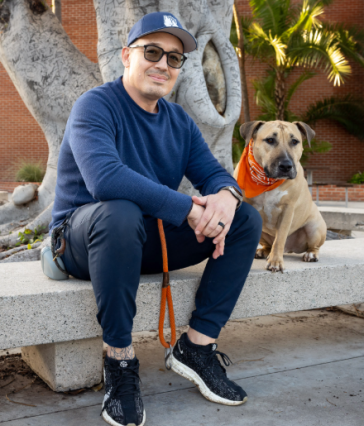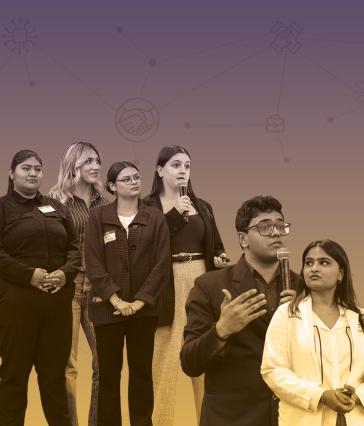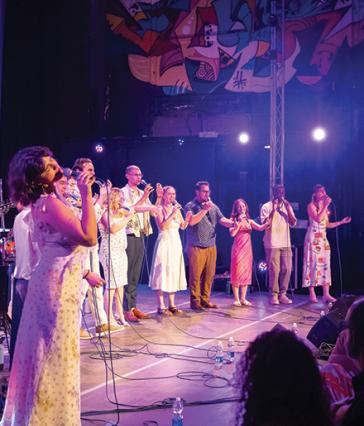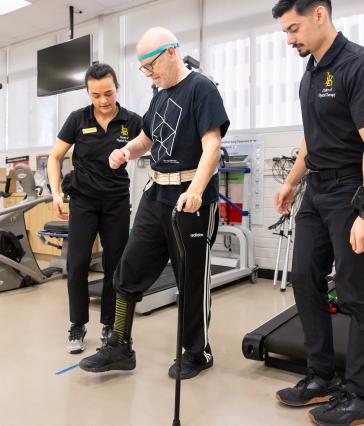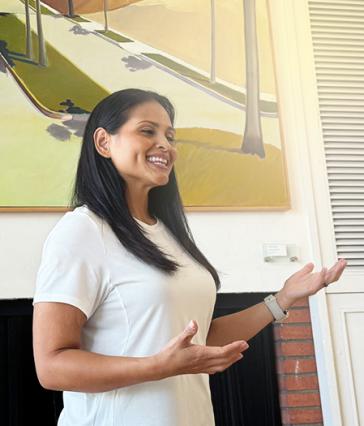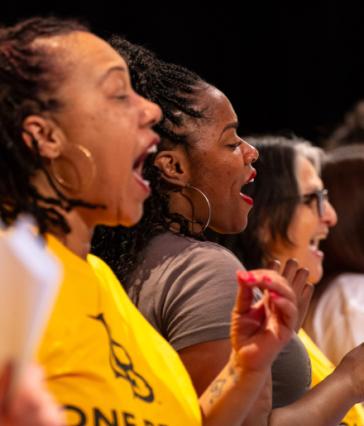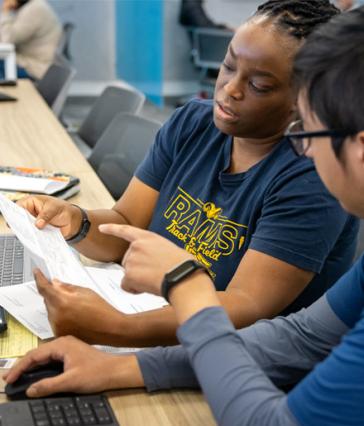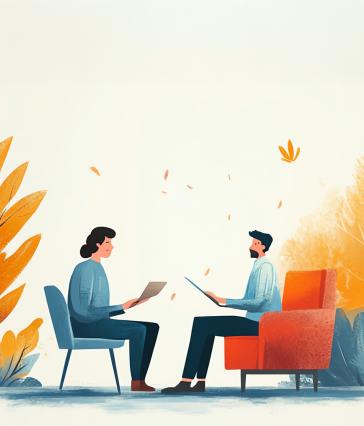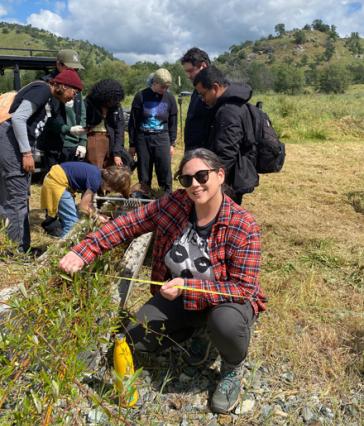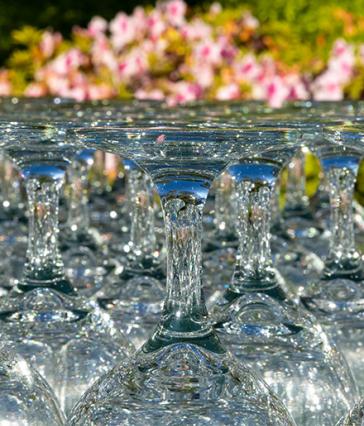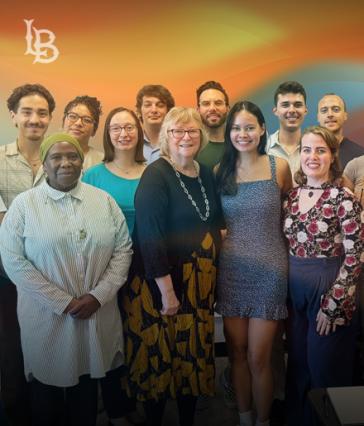CSULB alumni, supporters save geology field course, giving students hands-on experience
The heavy rains turned the hiking trails in Elk Basin, Wyo., into long muddy rivulets and boots into dirt-caked waders.
“We had a hard time cleaning our boots off. Everyone got muddy that day,” said Spencer Cooper ’22, a fourth-year student in the Department of Geological Sciences.
But when the warm summer rains triggered a rapid snow melt in southern Montana, the group of Cal State Long Beach geology suddenly could not see a way back to their camp. The road had been washed out by the historic flooding.
Yet, that didn’t deter the 20 hearty students who were mapping and documenting the region during the Summer Field Geology course. Residents stepped in to help the group maneuver around the river and get back to camp.
The Summer Field capstone is a four-week research-intensive class where students and instructors travel across California, Arizona, Nevada, Utah and Montana studying the Earth’s geological secrets. And despite the elements, the group of students came away not only with the completion of the course that is critical for careers in geology, but a better understanding of how the Earth has transformed over millions of years.
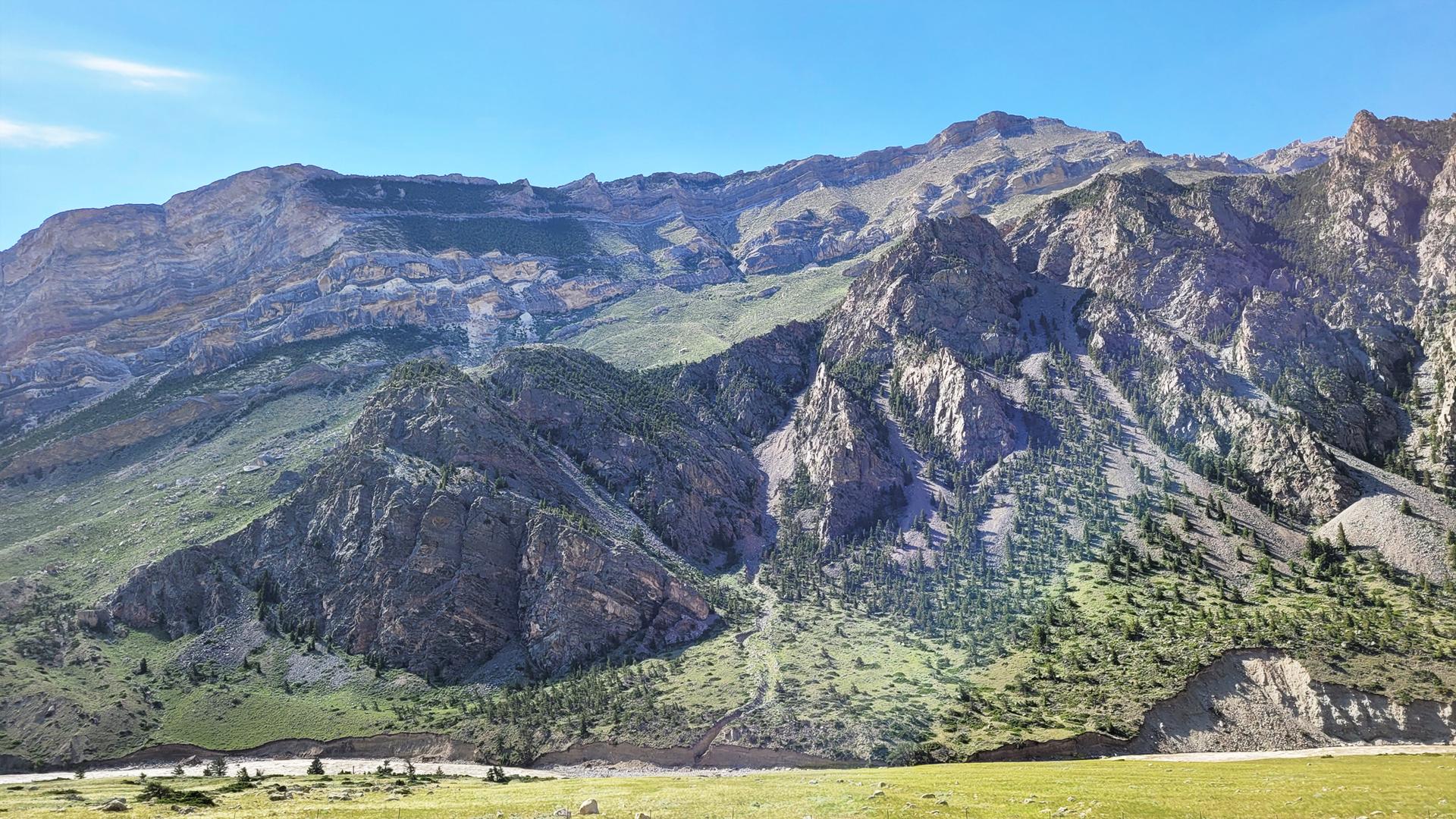
Spectacular mountain views greeted the geology students who traveled across five states during the Summer Field capstone. Photo by Spencer Cooper
The course was nearly canceled in 2020 by COVID-19 restrictions and prohibitive costs. That’s when Chair Rick Behl reached out to alumni and supporters who raised the funds to continue The Beach’s essential course.
“Real training, not virtual, is required by the California State Board to be a certified geologist,” Behl said. “The Spring and Summer programs are key to them moving forward.”
Cooper was excited to see the Summer Field course return to normal.
“There are so many variables to the earth, and the processes that create our landscape that the only way to learn about them is to experience them in the field,” Cooper said. “Because of our proximity to the beach and the deserts of southern California, we spent a lot of time looking at geologic features in these settings.”
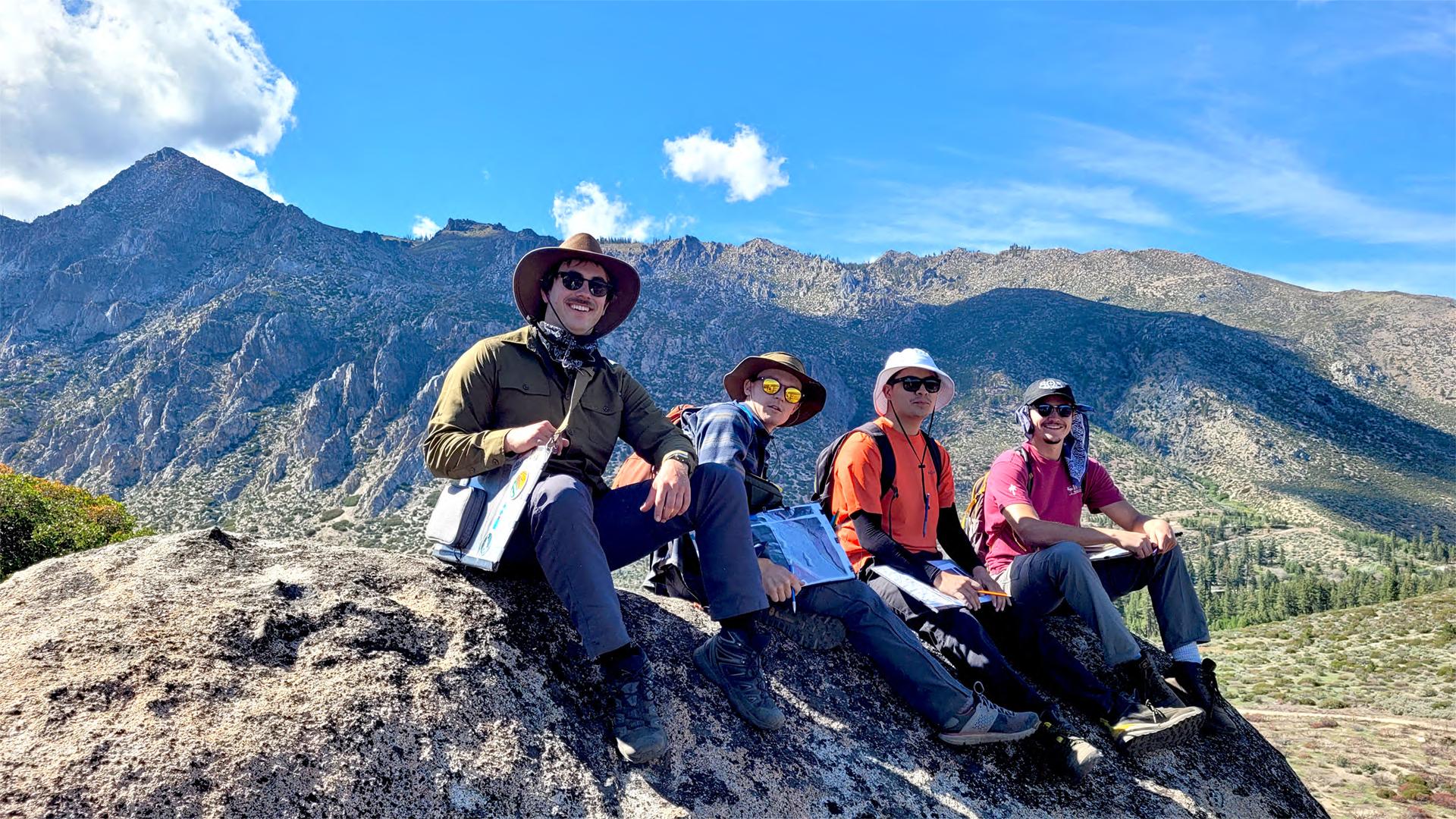
Geology students enjoy a break from mapping on a sunny afternoon during the Summer Field course. Photo by Spencer Cooper
Once the 1,500-mile trip began, the students found the classroom situation wholly different than what they were used to. They took notes on rocky outcroppings, hiked through narrow mountain gaps, and mapped layers of mountain ranges.
“Learning to map and field work in inclement weather, experiencing a 100-year flood in Montana, and seeing a wide range of geology in such a short time was a whole new experience for me,” said James Wasserman, ’22.
Behl has chaperoned dozens of these field trips. He said that not only do the students emerge from the class with a higher level of confidence physically, but they learn first-hand how there are no right or wrong answers.
“In a classroom, there is a right and there is a wrong,” Behl said. “Whereas in other sciences, such as chemistry and physics, you do an experiment, and you can control everything and see what happens.
“But outdoors and in the world, we can’t know exactly what happened. We don’t know what’s down on the Earth or the history of the environment and faults. So, we never get 100 percent right or wrong answers.”
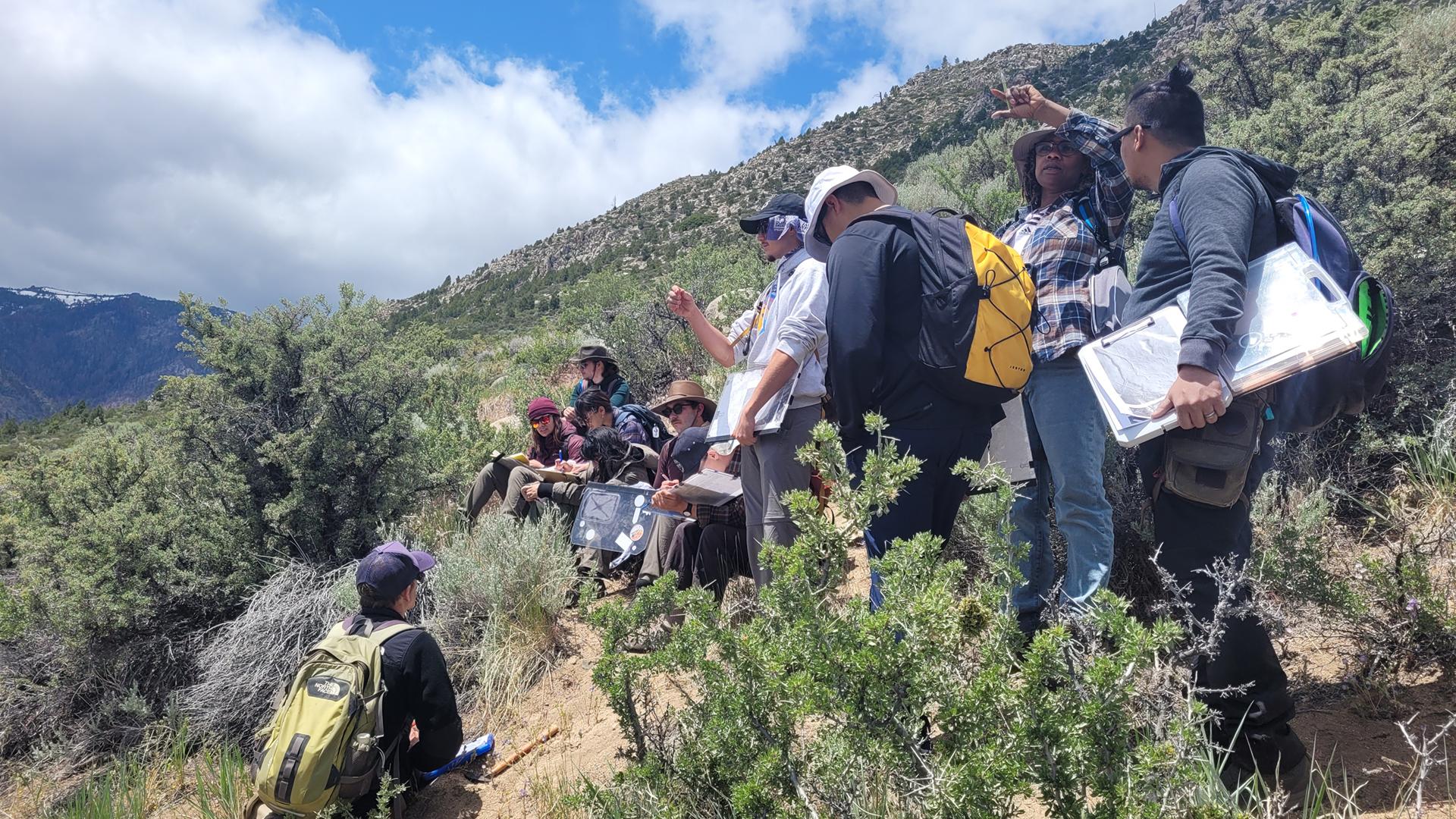
Geology students get some last-minute instruction before heading out to map fault lines. Photo by Spencer Cooper
Desiree Guzman, who will complete her B.S. in Geological Sciences this fall, said she learned a whole new skill set during the class.
“We learned how to map geomorphic features, create geological maps, identify minerals and rocks, create a stratigraphic column and create a cross-section,” Guzman said. “We also practiced using our critical thinking skills to make interpretations about geologic sequence of events.
“These are important skills to have, and I will definitely use them as I pursue my Ph.D.”
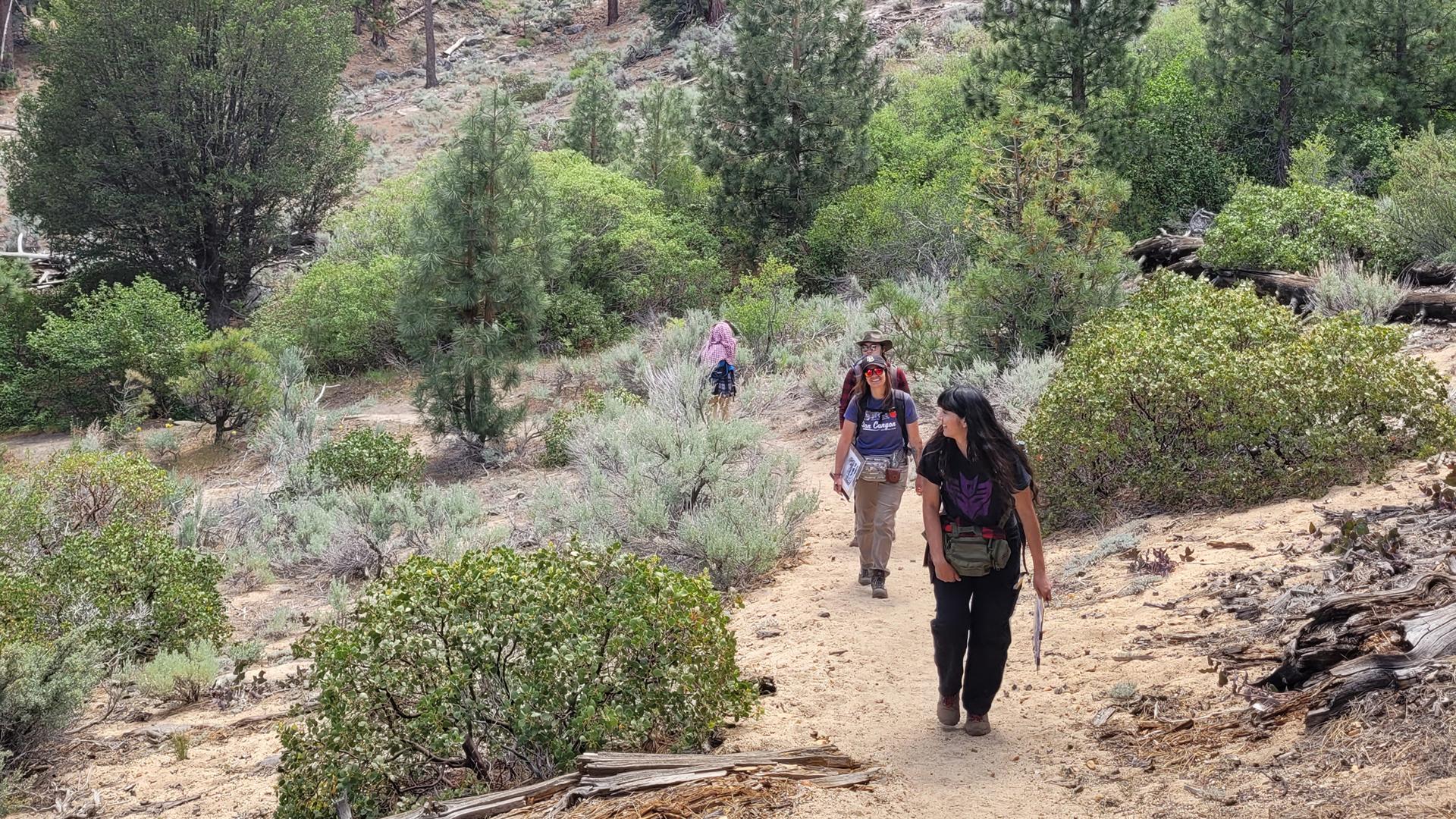
Geology student-researchers hiked through mountain regions in several states to locate fault lines and better understand how the Earth has changed. Photo by Spencer Cooper
In addition to tuition for the Summer Field course, students pay a fee that covers travel, lodging and meals. Those costs rose dramatically in the previous two years because of COVID-19 restrictions, threatening the essential course.
That’s when Behl began a crowd-funder, and 78 alumni and supporters raised the money to ensure the summer class would go on.
“When we reached out to alumni, they stressed the importance of the class,” Behl said. “But the course had become very expensive, and we didn’t want it to be a financial burden on the students.”
Although the students drove themselves, CSULB paid for their mileage and national park permits.
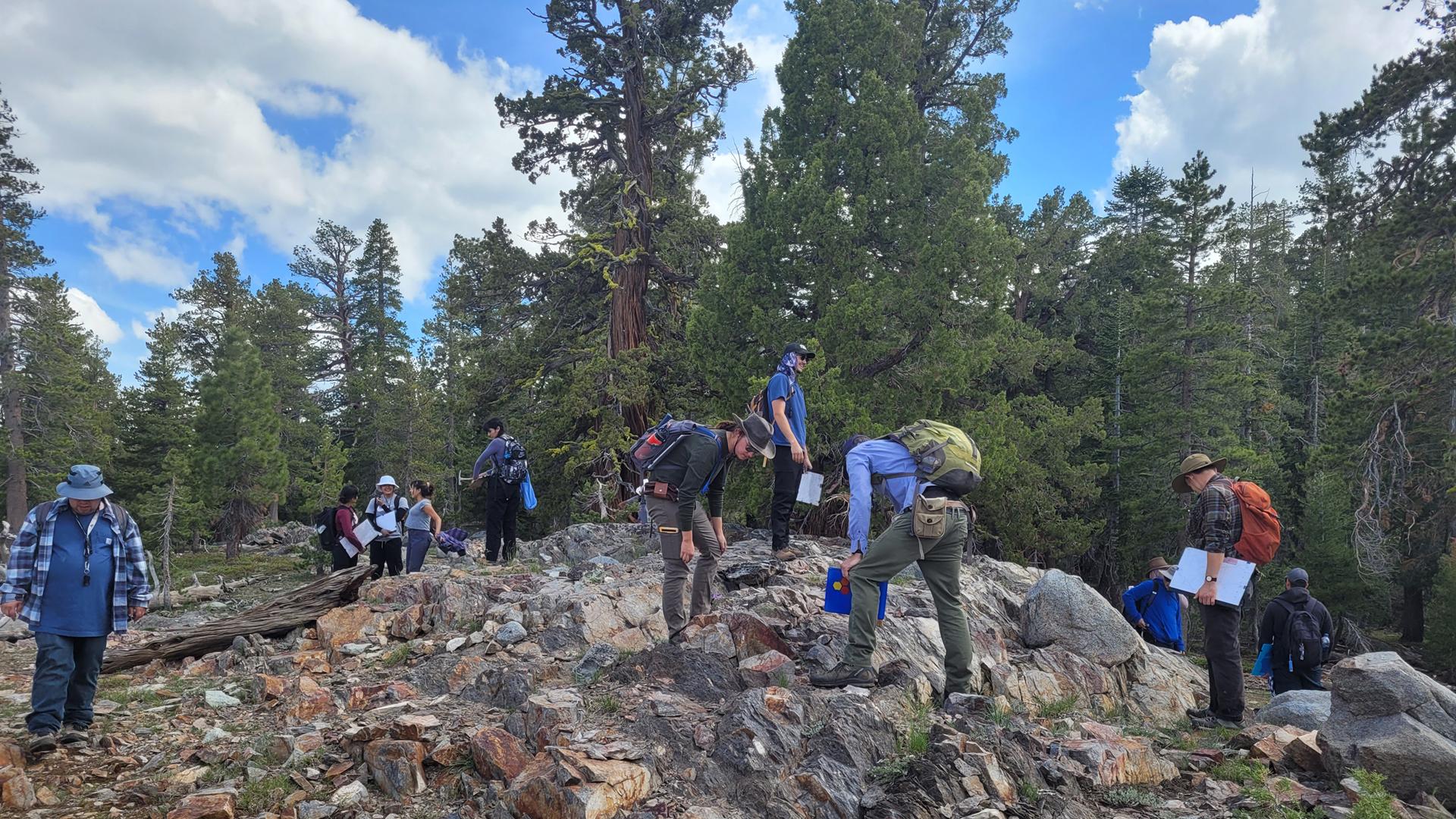
Students hunt for clues among the rocks in order to better map contacts between plutons and older rocks. Photo by Spencer Cooper
Last year, the department used additional school vans to transport the students; this year, the students shared three vans that carried them to places such as Lily Lake in Lake Tahoe and Carson Valley, where they mapped the Genoa Fault, which lies along a mountain front where sagebrush meets pine forests.
“The field areas we went to (Lily Lake bedrock mapping and Genoa fault geomorphic mapping) were beautiful,” said Wiseman.
The group visited the Nevada desert and the Sierra Nevada Mountains, where they were greeted by chilly temperatures. The weather warmed up once the students hiked to the higher elevations of the Desolation Wilderness, where they mapped contacts between plutons and older rocks.
It wasn’t all mapping geomorphic features and bedrock. The students took a side trip to Yellowstone National Park to experience Old Faithful on their way to Montana, stopping in Red Lodge and Elk Basin.
Wiseman said that in addition to the many postcard moments, he will take away several valuable skills that he learned on the trip.
“My ability to identify metamorphic rock has gotten much better from our time spent at Lily Lake,” Wiseman said. “Furthermore, deciphering between several adjacent units that were alike by an initial appearance has gotten stronger as well.”
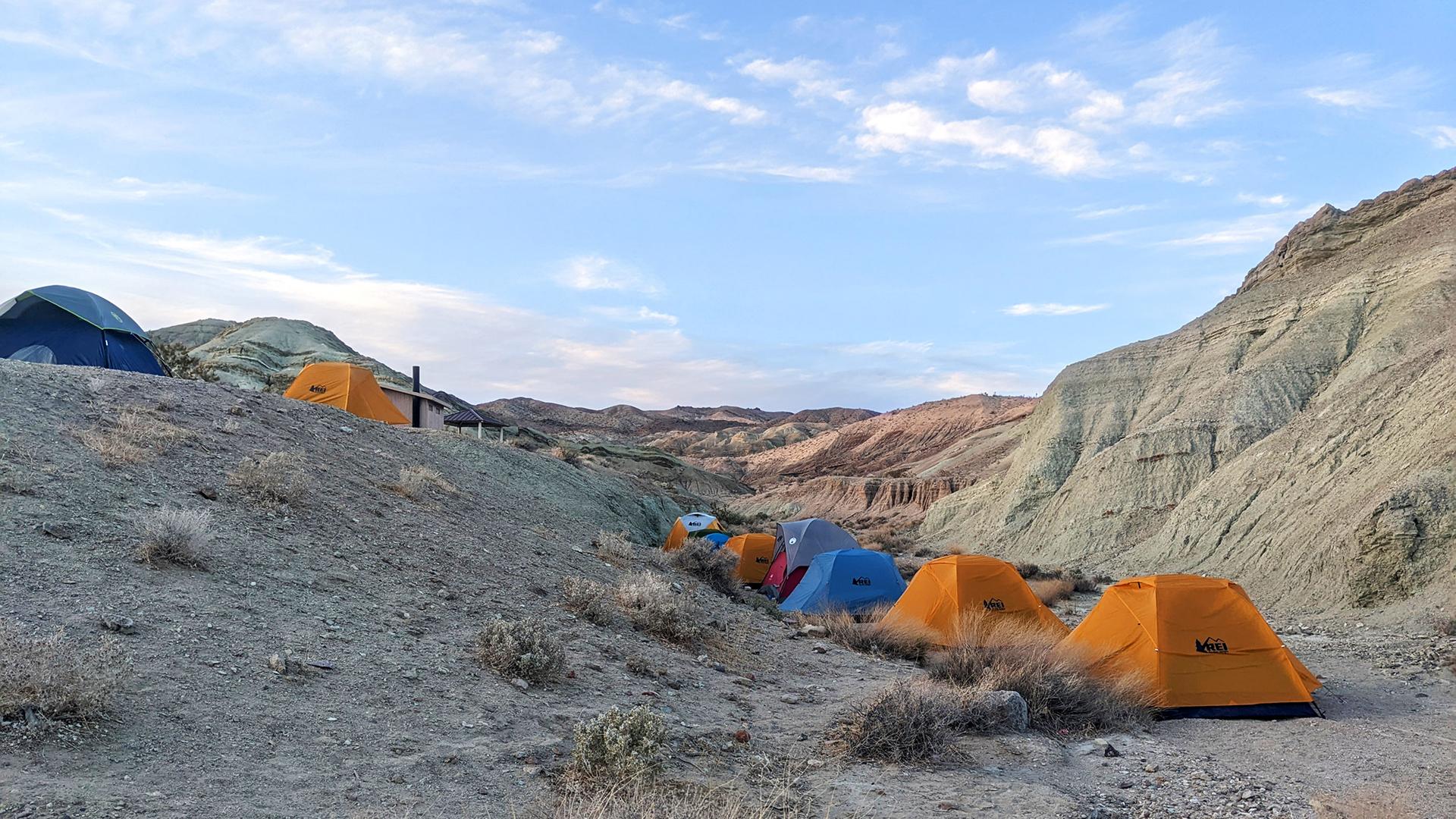
Accommodations for the students ranged from tent camping to cabins throughout the four-week exploratory course. Photo by Dr. Alyssa Abbey





